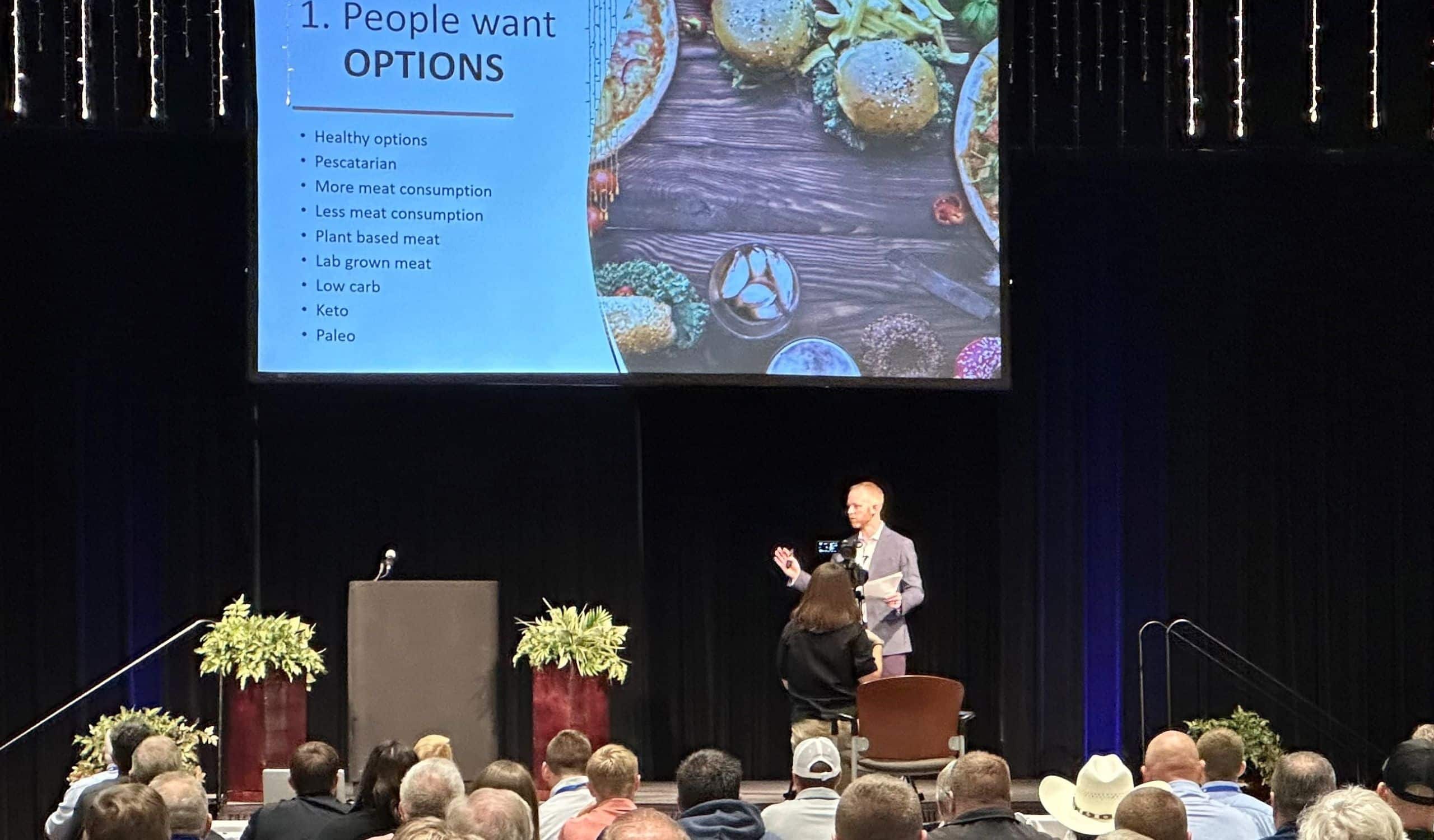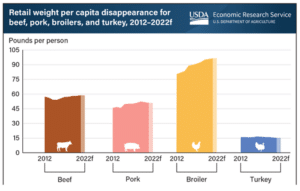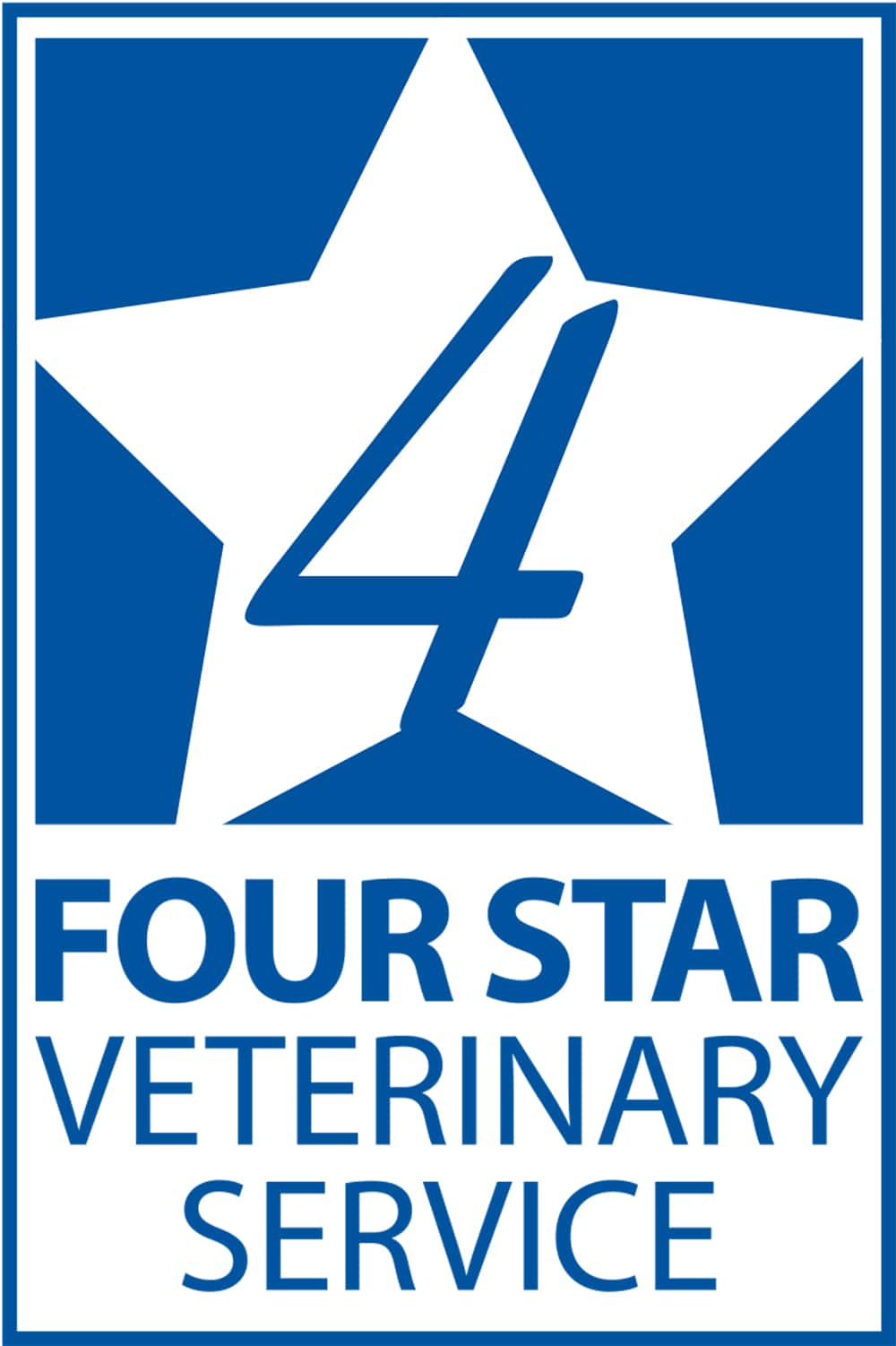
Paul Kalmbach, Jr., President with Kalmbach Feeds, spoke to attendees at the Annual Four Star Pork Industry Conference held in Muncie, Indiana in September about consumer trends and their impact on the pork industry and what producers can do on their farms to meet consumer and industry needs.
Kalmbach challenged the audience to think about their farm and the pork industry over the next five to 20 years. He shared research indicating key consumer trends in food.
Consumers want:
Options. Consumers want to trend into something, and they want to trend out of something. They might do that for a day, a week or a month. Recognizable options are keto, paleo, pescatarian or wanting more meat or less meat. The consumer is looking for choice, and they are doing more research and thinking about what they’re eating more than they ever have before.
Transparency. Consumers want transparency in the supply chain and in their food. They want to know where their food came from and who produced it. They want labels to be simpler and ingredients they can pronounce. For example, the poultry industry is adding QR codes on packages that point back to the farm and introduce the grower who raised the chicken. This is designed to create a personal connection between the consumer and their farmer. There are an estimated 50 million backyard hens today which account for approximately 15% of the US hen population, and 30% are in urban areas. There’s no better traceability than an egg laid in your backyard going into your skillet.
Increased sustainability. Consumers want to know what companies and farms are doing to be more sustainable. Kalmbach said research shows that they don’t really want to pay more for sustainability. It’s important to the consumer, but if it costs money, it’s less important. They’ll pay a little bit more but not a lot more. Kalmbach recommends producers consider how they define sustainability on their operation and how they can show improvement.
Pursuit of flavor. While our parents and grandparents may have been meat and potatoes consumers, today 2/3 of Americans are actively pursuing and consuming sweet and spicy flavors. 75% of Americans say they are currently looking for unusual and exotic flavors.

Convenience. According to some estimates, as many as 40% of all orders in a restaurant are going through an online channel or an app. Before Covid, only an estimated 5% of orders were online indicating a significant shift. The meal kit delivery industry has seen rapid growth and now has revenues estimated at $9 billion.
What about pork?
The consumer says pork has work to do, according to Kalmbach. From 2019 to 2022, US pork consumption went down. While exports are important, he suggested we need to focus as well on domestic consumption and need to narrow our focus as an industry to the things that will have a significant impact.

Kalmbach believes the following three areas are most important:
- Improve the flavor of pork. Kalmbach encourages the pork industry to stop thinking about pork as only a commodity and start thinking about how to improve the flavor – from a genetics perspective, from a feed perspective and from a consumer preparations perspective. He believes we don’t have a cost problem – we have a flavor problem, and all you have to do is look at the price of a steak as a comparison.
- Educate the next generation. Millennials, Gen Z and Gen Alpha need to be educated on pork – how to cook it and that it’s flavorful, it can taste great and it’s good for you.
- Expand and communicate our sustainability story. Producers care about sustainability – sustainability of your business, sustainability of the industry, and being good stewards of our natural resources. However, as an industry we must learn how to share that message with consumers. Kalmbach says pork has a great story to tell, but we’ve got to continue to find producers in our communities to share the story of their farm.
What can producers do on-farm?
Kalmbach shared a few things they’re doing at Kalmbach Feeds. The first is to prepare and plan for volatility.
“We must prepare for volatility. There are some great years ahead for the pork business and there are some tough years,” said Kalmbach. “My dad has told me for years that everybody in the pork, chicken or beef business is a survivor. We’ve all survived a lot of downturns, so we know how to do it.”
Hedging. “The days of playing the spot market are going to be really challenging. The market gives opportunities, and it takes opportunities away so we’ve got to be diligent at looking for opportunities and taking advantage of them,” he said.
Kalmbach says he’s learned two lessons. The first is to be careful about the advisor you use. he said they often look for an advisor who has his own money in the markets. The second is to maintain your hedging strategy. For example, when the markets are low, hedging helps protect you from any further downsides. Then, the markets go up and you feel bad because you’ve missed the upside. Some are tempted to stop hedging, and the markets are good for a few months, then they fall.
“You’re in a situation where you were hedging with a solid strategy. If you had employed that strategy when the markets went up, you’d have an opportunity to make money for the next 12 to 18 months,” he said. “Instead, you don’t make the money that you should have when the market went up – you get a few months of profit – then you lose the opportunity, and you missed on both ends. So, we don’t change our hedging strategy unless something fundamentally changes in the market. Otherwise, we maintain a strategic hedging program that allows you to weather the ups and downs of market volatility.”
Manage debt levels. Interest rates may go up, down or stay the same. The consistency of the platform the industry has relied on for years will be more volatile. Kalmbach says we must be more diligent and careful about how we manage the debt levels on our farms.
Focus on cost reduction. “This was a mentality shift for our business and we’re not perfect at this,” said Kalmbach. “Growing up, I heard my dad and our team say that we need to produce the maximum pigs per sow per year – that’s the number one metric to hit. But in the last 12 to 24 months, we started looking at each other and said, ‘Okay, great – we’ve got 32 pigs, but what did they cost?’ If we had to add $5 to get the extra two pigs, are they worth it?”
If you get paid for the cost, then it’s absolutely worth it. If you’re not getting paid for the cost, then re-evaluate.
Find profitable niches
“We continue to look for niche markets. If the pack is doing the same thing, there’s probably not extra money in it,” he said. “It may only be a small percentage of what we do – like 5% – but if it generates twice as much profit, it could be a meaningful part of our business.”
It may be antibiotic free or organic, creating better tasting pork or a different type of diet. Kalmbach suggested asking your local packer what they are looking for that may be different. What trends do they see for their market needs?
“If this was easy, there wouldn’t be any niches. I recognize that what I’m saying is really hard,” he explained. “It takes diligence; it takes effort; it takes persistence; and sometimes it takes a long time. But our experience is that it’s really critical to your business. The other thing to realize with niches is they may last six months or six years or 16 years, but they don’t generally last lifetimes.”
It is important to continually search for the next niche opportunity. When you do identify it, take advantage of it and refine your business. The ideal is that niche markets enhance your sustainability efforts and help meet the long-term goals for your business.
Diversify
“Over the last 20 to 30 years, we’ve diversified our offering and it’s something to consider when you’re thinking about long term planning for your business,” he said. “I don’t have a prescription for how to do this. But we believe that diversification has been an important part of our success.”
Diversification can look different in every single business. It might mean adding crop farming or a contract for a pig finishing barn over the next 5 to 10 to 20 years. Or it could mean adding an egg or turkey contract barn or raising calves for dairy farms. Or you could look outside of agriculture and buy a plumbing company or start buying and managing rental properties.
“We’ve decided to diversify primarily in agriculture. That’s our decision, but that doesn’t mean it’s the right decision for everyone,” he said. “But if we’re trying to manage volatility, and we’re thinking about bringing other generations into the business and creating more opportunities, then we have to grow.”
“If I asked you what your competency is, many would say that they’re really good at producing pigs. Now, take that one step further. Maybe your competency isn’t producing pigs – maybe it’s broader than that – maybe you’re actually really good at managing livestock, and there are lots of other types of livestock than just pigs. Maybe your competency is that you are good at managing costs – you might be a great restaurant owner or a great house flipper. Everyone has competencies that apply to more than just raising pigs.”
Regardless of where you are in your business, think about long-term planning and where the opportunities are going to be. Try to focus on growing in a few new areas.
“I’m not suggesting you should step away from pork. Focus on being the best you can be in the pork industry,” he said. “However, all of us need to think about additional areas of competency and how we can grow our business in multiple directions.”
